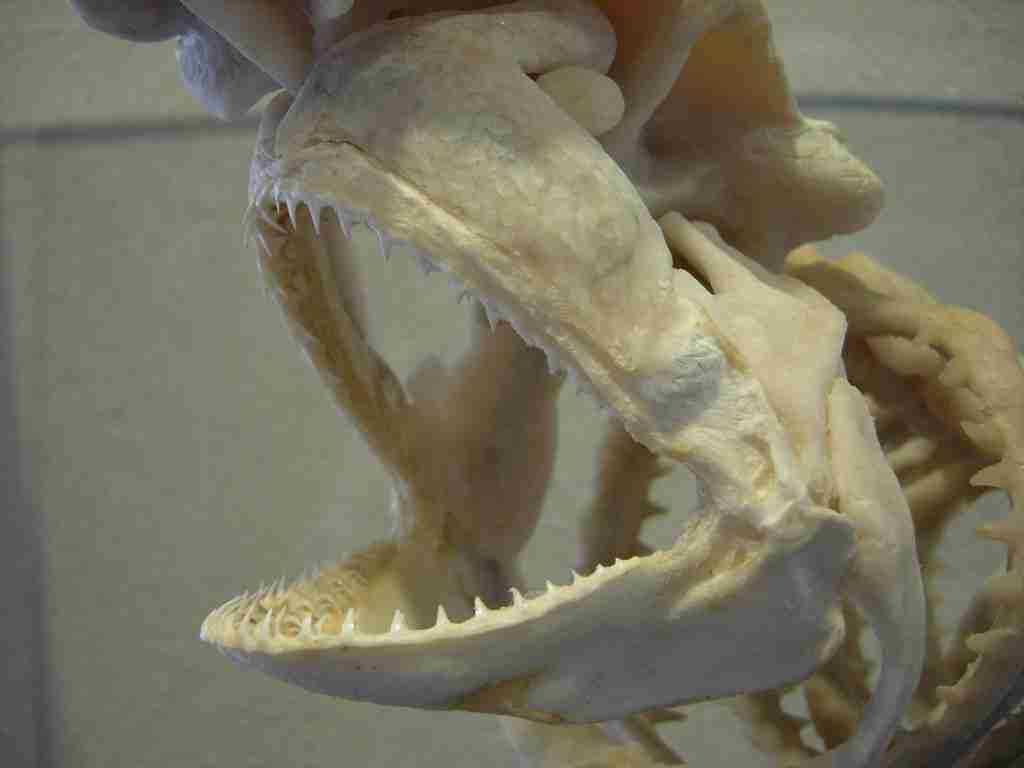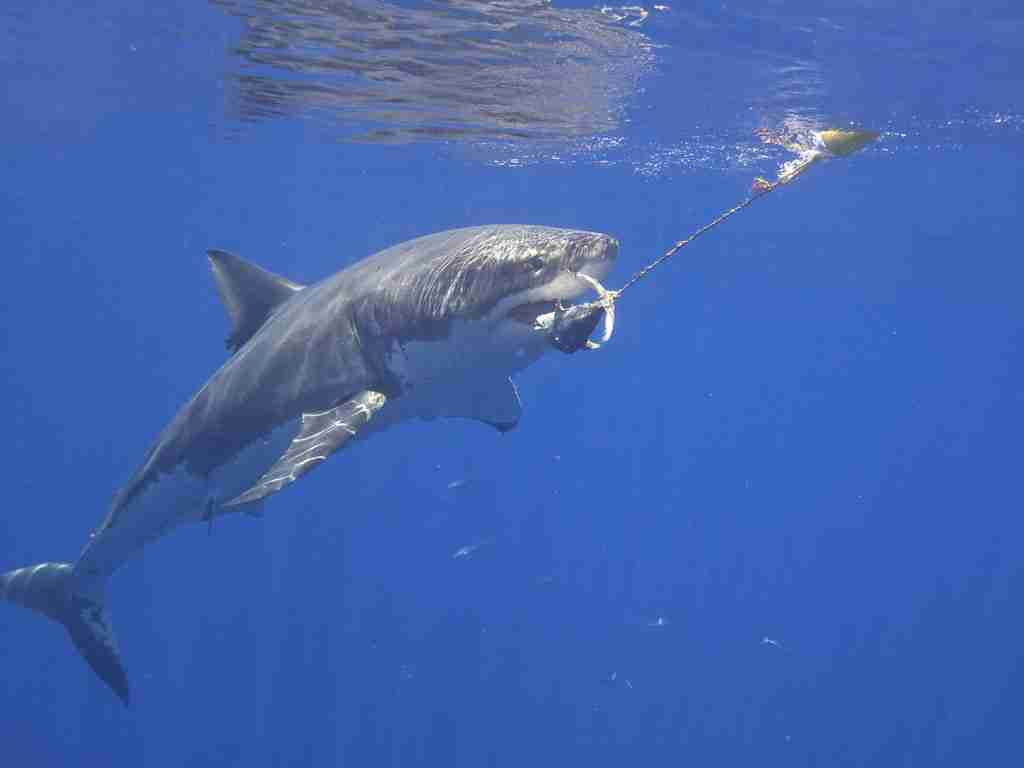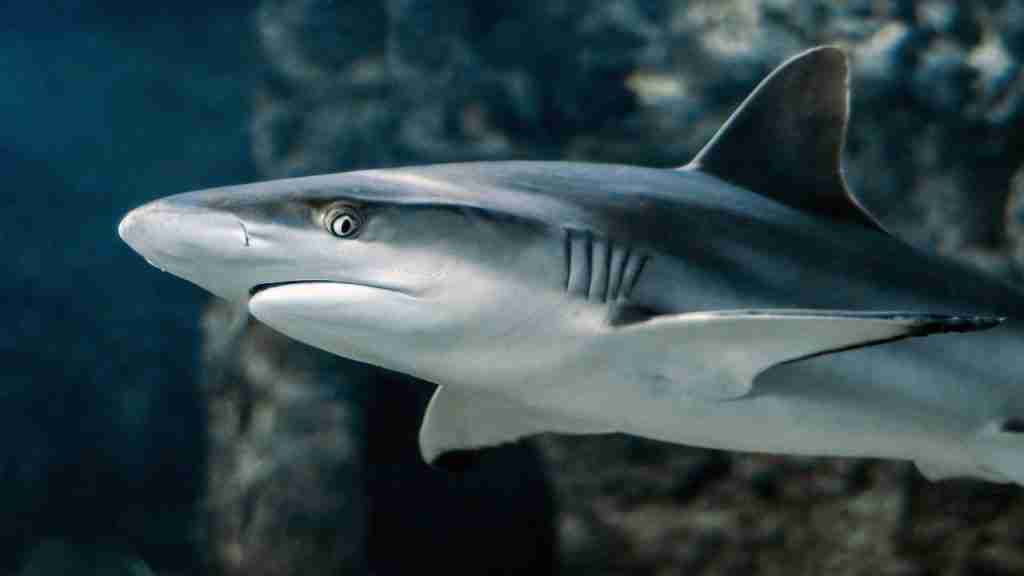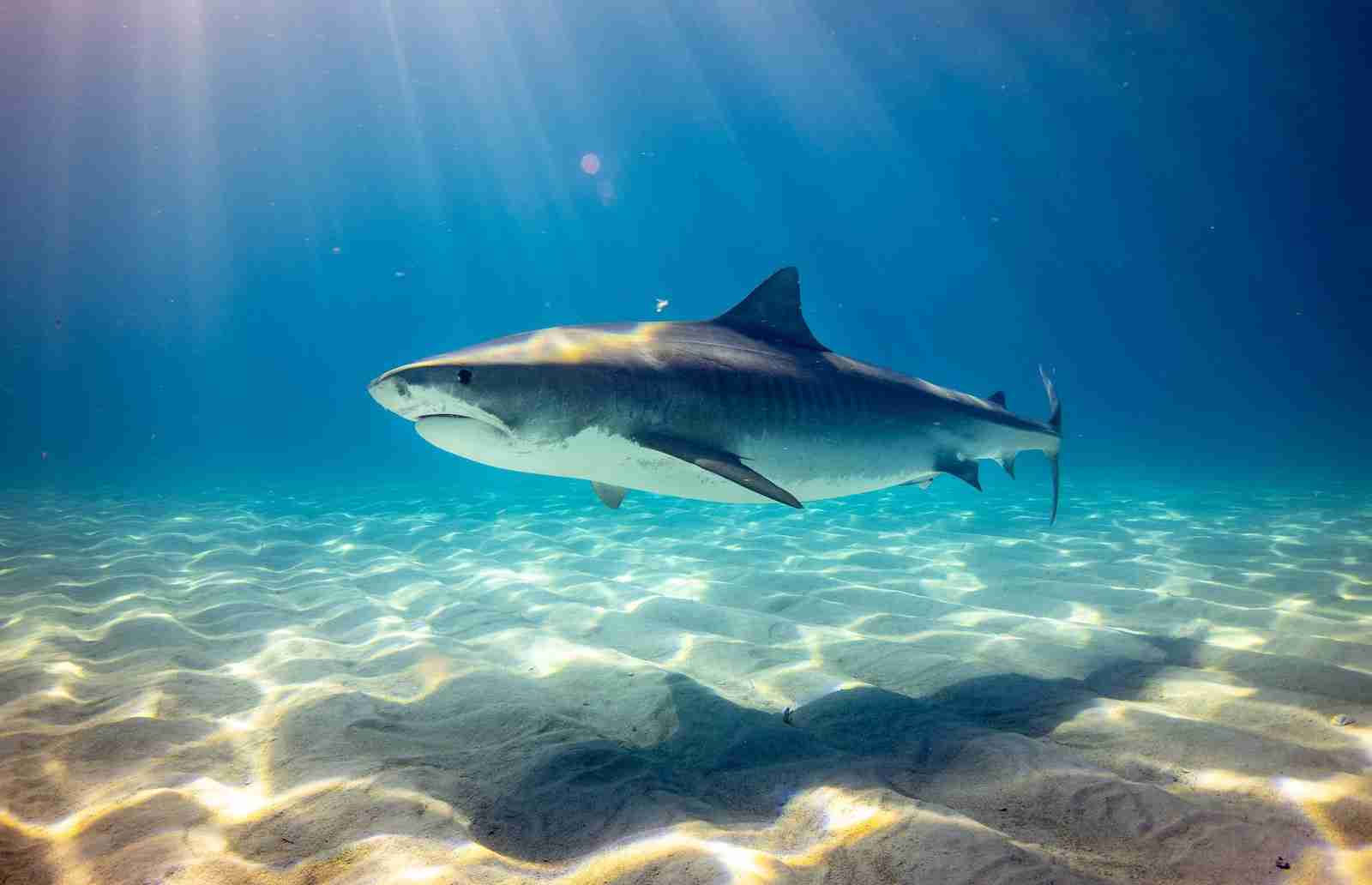24 Fun Facts About Sharks | The Apex Predators
1. Sharks predate Dinosaurs, with fossil evidence dating back 450 million years.
Sharks are older than dinosaurs and trees, existing for over 450 million years. The earliest shark fossils, dating back to the Late Ordovician Period, suggest they might have been toothless.
Recognizable as sharks by the Devonian Period, around 380 million years ago, they evolved from eel-like forms to the species we know today.
2. There are more than 500 species of Sharks in the world.
Over 500 Shark species, from Angel to Zebra Sharks, inhabit our oceans, classified into eight distinct orders. Each species boasts unique traits and behaviors, contributing significantly to ocean ecosystems.
Their diets vary widely, with some hunting fish, others consuming worms, and some filtering plankton, showcasing their diverse roles in maintaining marine life balance.
3. The largest Shark ever recorded was a Whale Shark measuring 41.5 feet.
In 1947, a colossal Whale Shark, the planet’s largest living non-mammalian vertebrate, was captured off Pakistan, measuring 41.5 feet and weighing 47,000 pounds.
This giant, now displayed at Karachi’s Marine Fisheries Department, highlights the impressive size these ocean rulers can attain.
4. The U.S. sees more Shark attacks than any other country.
The US leads globally in ‘confirmed unprovoked’ shark attacks, with 1,604 incidents since 1580, according to the ISAF. Florida alone accounts for nearly 60% of all US shark bites recorded since 1837.
In 2022, the US reported 41 confirmed shark attacks, maintaining its position as the country with the highest number of shark encounters worldwide.
5. Sharks can detect a single drop of blood in an Olympic-sized pool.
Sharks have an incredible sense of smell, detecting one part of blood per million in seawater, akin to sensing a drop of blood in an Olympic pool. Factors like species, currents, and wind affect this ability.
Water currents carry scent particles, and sharks’ nostrils, lined with ‘olfactory epithelium’ cells, expertly pick up these minute traces, showcasing their remarkable detection skills.
6. Shark fin soup has been a Chinese delicacy since the Ming Dynasty.
Since the Ming Dynasty, Shark fin soup has symbolized wealth in Chinese culture, initially reserved for emperors and later enjoyed by affluent families. Common in China, Taiwan, and Southeast Asia, it’s served at special events like weddings and banquets.
The fins add texture, not flavor. However, this luxury dish faces criticism from the international community, as 72 million sharks are annually killed for their fins.
7. Lantern Sharks have photophores that create light chemically.
Lantern Sharks possess unique photophores, tiny light-emitting organs, on their bellies and fins. These photophores, using bioluminescence, help them blend with sunlight in shallow waters, masking their silhouette from predators below.
Each photophore contains light-emitting cells covered by a lens, directing light outward. This bioluminescence, a form of camouflage, is hormonally controlled in these small, remarkable sharks.
8. The film ‘Jaws’ was based on a real Shark incident in 1916 in New Jersey.
Steven Spielberg’s ‘Jaws‘ was inspired by 1916’s real-life New Jersey Shark attacks, where four, including a child, were killed. These attacks, rare instances of a single shark’s multiple assaults, sparked widespread fear.
The film depicts a great white shark terrorizing Amity Island, echoing the panic of the 1916 Jersey Shore incidents, which occurred over twelve days.
9. Some Sharks get through up to 30,000 teeth in a lifetime.
Sharks can go through 30,000 teeth in their lifetime, constantly regenerating new ones. Their teeth, varying in four basic types, are arranged in rows like a conveyor belt.
When a front tooth falls out, another from behind takes its place, ensuring they always have sharp, functional teeth for eating. This remarkable dental system keeps their bite effective throughout their lives.
10. Sharks do not have vocal cords and communicate physically.
Sharks, lacking vocal cords, are silent creatures that communicate through body language. They exhibit behaviors like zigzag swimming, head shaking, and head butting to interact.
Great white sharks, for instance, use specific gestures to signal non-aggression. Body movements such as jaw opening, head nodding, and body arching serve as their way of ‘talking’ and conveying social signals to each other.
11. Sharks have survived five major mass extinction events.
Sharks have thrived in Earth’s oceans for over 400 million years, enduring five major extinction events, including the one that extinguished dinosaurs. Their survival is attributed to deep-water species and dietary adaptability.
The Cretaceous-Paleogene event 66 million years ago, caused by a massive asteroid impact, led to the extinction of many species, but Sharks resiliently persisted through these drastic ecological changes.
12. Sharks’ skeletons are made of cartilage, not bone.

Sharks have skeletons made entirely of cartilage, not bone, similar to the flexible material in human ears and noses. This cartilage, found in their jaws, spinal column, and around their brain, is strengthened by calcium salts from their diet, making it harder over time.
All sharks, possessing around 200 to 400 cartilaginous structures, benefit from this lightweight yet strong skeletal makeup.
13. The smallest Shark is the Dwarf Lantern Shark, measuring just 6 inches.
The dwarf lantern shark, the smallest known shark species, belongs to the Atlantic’s Etmopterus genus. Measuring just 6.3 to 7.9 inches, it’s small enough to fit in your hand.
This shark is distinct with its dark and light streaks and spots, and a somewhat flattened head and snout. It features unique photophores on its fins and belly, producing light chemically.
14. Sharks can become mesmerized when flipped over, entering a state called tonic immobility.
Tonic immobility, a reflex causing temporary inactivity, is like hypnosis and occurs in many Sharks. When flipped over, Sharks enter this state, possibly as an anti-predator defense, reducing attack success.
Induced by inverting, Sharks become immobilized within a minute and can remain so for up to 15 minutes. In this state, their breathing steadies, and muscle contractions relax before they swim away.
15. The Cladoselache is one of the earliest known Shark species.
Cladoselache, an extinct genus of sharks, is among the earliest known species, with fossils found in Upper Devonian rocks, dating back 385–359 million years, in North America and Europe.
These early sharks, measuring about 1.2 meters, lived over 400 million years ago. Characteristically, Cladoselache had a front-facing mouth and broadly attached pectoral and pelvic fins, distinguishing it from larger shark forms.
16. Great White Sharks eat 11 tons of food a year.

Great White Sharks, known as the ocean’s most dangerous predators, consume an astonishing 11 tons of food annually. In a single bite, they can devour 20-30 pounds of flesh.
Their diet mainly includes fish and sometimes sea turtles. For perspective, a 150-pound human eats about half a ton yearly. Remarkably, Great Whites have a 40-55% success rate in hunting seals.
17. Commercial fishing kills about 100 million sharks each year.
Annually, commercial fishing leads to the death of around 100 million Sharks, with 73 million targeted for Shark fin soup. A study in Marine Policy reveals that 6.4-7.9% of all Sharks are killed each year, a concerning rate given their slow maturity and low birth rates.
Largely unregulated, fishing for shark fins, meat, liver oil, cartilage, and other parts is pushing some Shark species toward extinction.
18. The Short-fin Mako Shark is the fastest Shark, capable of swimming up to 65 mph.
The Shortfin Mako Shark, one of the ocean’s fastest, can reach speeds of up to 60 mph, while its Longfin counterpart hits up to 35 mph. Their speed is attributed to unique skin formations called dermal denticles.
These highly migratory sharks typically favor waters within 500 feet of the surface, showcasing their remarkable agility and preference for shallower oceanic environments.
19. The odds of being attacked and killed by a Shark are 1 in 3,750,000.
The likelihood of a fatal Shark attack is remarkably low, at one in 3.75 million. While the US and Australia report the most Shark attacks annually, the risk of dying from one is rarer than being struck by lightning.
This statistic highlights the disproportionate fear of Sharks compared to the actual minimal threat they pose to humans.
20. Sharks are apex predators, crucial for marine ecosystem balance.

As apex predators, Sharks play a vital role in maintaining oceanic ecosystems. They regulate prey populations, ensuring a balanced food chain and healthy marine life. Overfishing, however, is reducing Shark numbers, disrupting this balance and stressing food supplies.
By promoting biodiversity, Sharks contribute to robust ecosystems, making their conservation crucial for the overall health and stability of ocean environments.
21. Sharks can open their mouths nearly 180 degrees.
Sharks have uniquely structured jaws, not attached to their skulls, enabling them to open their mouths nearly 180 degrees. This feature allows them to thrust their mouths forward and bite prey effectively.
In contrast, the bowhead whale, with the largest jaws of any animal, can open its mouth to 170 degrees, swallowing up to half a ton of food in a single gulp.
22. Intrauterine cannibalism occurs in some Shark species.
In some Shark species, a phenomenon called intrauterine cannibalism occurs. Notably, in Sand Tiger Sharks, the largest embryos in each uterus consume their siblings and unfertilized eggs during gestation.
Although many eggs are produced, typically only two pups survive, one from each uterus. This survival strategy ensures the birth of larger, more viable offspring, significantly enhancing their chances of survival.
23. The Cookie-Cutter Shark leaves a unique, circular wound on its prey.
The Cookie-Cutter Shark, known for its distinctive feeding habits, leaves a unique, cookie-shaped circular wound on its prey. It attaches to its host, rotates its body, and extracts a plug of flesh, creating a smooth, concave scar.
This signature mark on its victims has earned the Shark its name, making it notorious for its unusual and identifiable biting pattern.
24. Sharks have a 360-degree vision field.

Hammerhead sharks possess a remarkable 360-degree vision field, allowing them to see above, below, and all around them. Their uniquely positioned eyes on the sides of their heads provide this extensive visual range.
By moving their heads side to side, they enhance their stereoscopic sight, enabling them to effectively monitor their environment and spot prey, making them highly efficient predators.
FAQs
Sharks have no bones; their skeletons are made of light, buoyant cartilage and large, oil-rich livers. Despite lacking bones, sharks can still leave fossilized remains.
The whale shark, Rhincodon typus, is the world’s largest fish, inhabiting tropical and temperate oceans. It can grow 15-18 meters, thrice the size of the largest great white shark.
Sharks can hear sounds from over 1 km away, especially mid-water swimmers like Bull and Lemon Sharks. Their acoustic-lateralis system detects frequencies between 10Hz-800Hz across great distances.
Not all Sharks need constant swimming; species like Nurse Sharks use spiracles to breathe while stationary. Sharks have restful periods instead of sleep, often with their eyes open.
Sharks first appeared around 400 million years ago, predating dinosaurs by 200 million years. The earliest fossils, dating back 450 million years, are scales from the early Silurian period.







